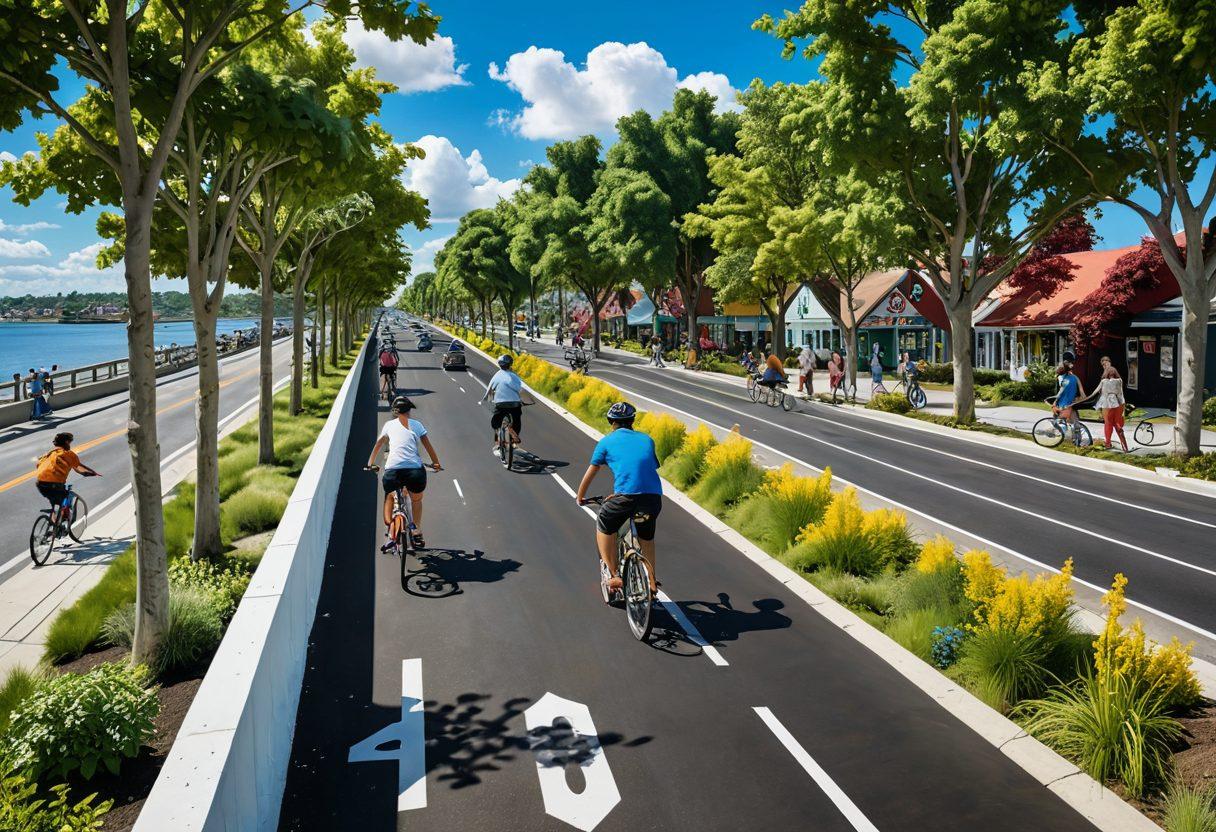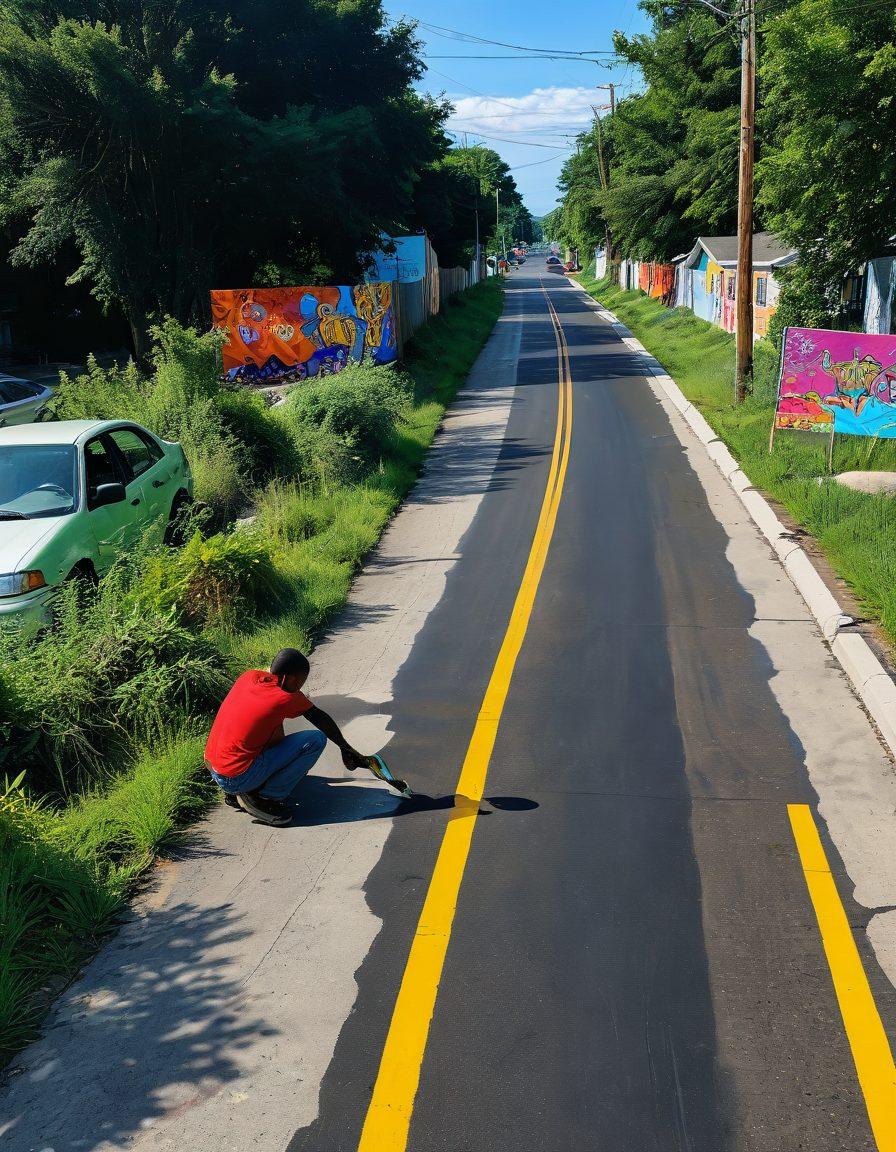Healing Our Unhappy Highways: A Journey Towards Safer Roads and Community Involvement
Imagine driving down a sleek, modern highway, with vibrant trees lining the roadside and safety features ensuring a comfortable journey. Now, contrast that with the unhappy highways we often see—sorrowful roads riddled with potholes, unsettling conditions, and a constant threat to our community's well-being. This disheartening landscape begs the question: How can we transform our transport network into a safer, more welcoming environment for everyone? Our journey towards revitalizing these tortured stretches of asphalt doesn't solely rest with government initiatives; it's in our hands as a community. It's time to prioritize community involvement in traffic safety solutions and create the kind of infrastructure development that leaves no one behind.
The sad truth is, many of our roadways tell a story of neglect. With alarming statistics highlighting roadway maintenance lagging behind needs, the consequences become immediately visible: increased accidents, a rise in pedestrian injuries, and a deteriorating sense of public welfare. As commuters, we face the daily grind of transportation issues that don’t just impact our travel time, but ultimately affect our quality of life. Isn’t it time we ask ourselves—how safe do we really feel on our roads? We can begin to address these questions by engaging our local community in roadway safety initiatives focused on improving highway conditions that impact us all.
Consider a world where residents ignite their passion for the roadways just outside their doors. By mobilizing efforts focused on traffic management, involving local citizens in road usage decisions, and infusing community insights into planning discussions, we can adopt solutions tailored to our specific needs. For example, organizing community watch groups that advocate for pedestrian safety can lead to increased awareness and signal change to local authorities. A community’s voice is a powerful tool, one that should resonate loudly in the halls of infrastructure development discussions.
Everyone has a role to play in ensuring safety on roads. Engaging in conversations about commuter safety and vehicle safety can go a long way in building a better commuting experience for us all. Why not host town hall meetings to address concerns related to public transit safety? In doing so, we can not only present our case to local policymakers but also encourage the sense of shared responsibility that fosters stronger community ties. Our highways can transform from sorrowful roads to thriving channels of connection with thoughtful initiatives.
So, how can we get started on this vital journey? First, create awareness around the tools available for community-led initiatives. Engage with local organizations that prioritize pedestrian safety advocacy and roadway conditions improvements. Next, consider organizing a neighborhood safety audit to assess current traffic management practices and identify areas for improvement. Remember, these efforts can be as small as gathering a group to clean up a poorly maintained bus stop or as large as spearheading a campaign for new crosswalks to ensure public welfare. Each action counts, and together, we have the potential to create something remarkable—a transportation system that respects the needs of all community members.
From Sorrowful Roads to Safe Highways: Uniting Communities for Better Infrastructure
When we think about our highways, what comes to mind? Endless stretches of asphalt, the hum of engines, and the promise of reaching our destinations. Yet for many of us, these roads have become symbols of frustration—sorrowful roads that carry more than just vehicles; they bear the weight of our commuting woes, safety concerns, and community disconnect. It’s time we turned our unhappy highways into safer corridors, uniting communities for better infrastructure. How did we get here, and how can we pave the way back to a more inviting road experience?
In countless communities, the conversation around roadway safety remains at the surface. We often hear whispers about traffic safety, yet these discussions rarely translate into meaningful action. Have you ever driven on a road filled with potholes, wondering if your vehicle will survive the journey? Many can relate to this sentiment, highlighting the pressing need for improved roadway conditions. By tackling transportation issues head-on, we not only enhance our vehicular experiences but also contribute to public welfare, ensuring that everyone—pedestrians and commuters alike—can traverse their neighborhoods safely.
As we embark on this journey toward infrastructure development, the role of community involvement becomes paramount. It’s easy to feel overwhelmed by the vastness of the transport network and its complexities, but real change starts at the grassroots level. Imagine coming together with neighbors to advocate for better maintenance of local roads or organizing forums to discuss traffic management solutions. By establishing open dialogues about highway conditions, we can gather insights into what matters most to our communities, ultimately prioritizing what aspects of safety on roads require immediate attention.
While road usage continues to increase, so do the risks associated with it. The statistics around vehicle safety, pedestrian safety, and public transit safety can often seem daunting. But let’s not get lost in despair. Instead, let’s draw inspiration from the many communities that have successfully turned their struggles into triumphs. Together, we can develop innovative solutions that address commuter safety through efficient local transit systems and effective maintenance programs. A united community can demand accountability, ensuring that those in power recognize the importance of caring for our highways.
In conclusion, the journey from sorrowful roads to safe highways starts with us—every single one of us. By harnessing the collective power of community involvement, we can reshape our transport network into a model of safety and efficiency. Let’s stop resigning ourselves to unhappy highways and instead take proactive steps toward improvement. Will you join this movement for better roadway maintenance and conditions? Together, we can ensure that our roads not only lead us home but also reflect the vitality and safety of our communities.
Transforming Transportation: How Local Involvement Can Enhance Roadway Safety and Conditions
In recent years, our highways and local roads have been labeled as 'unhappy highways' and 'sorrowful roads', echoing the cries of commuters, pedestrians, and even cyclists who crave safer and better infrastructure. The journey towards enhancing roadway safety starts not with large government budgets or high-tech solutions, but with grassroots community involvement. After all, who better to identify transportation issues than the very people who experience them daily? The collective voices of local communities can not only drive change but also ignite a culture of public welfare where every user feels valued and secure on the roads.
Imagine a small town where traffic safety is not just a governmental concern but a shared responsibility among its residents. When local citizens come together, compelling stories emerge—like the passionate grandmother who organized a crosswalk campaign after witnessing a near-miss with a child. She rallied her neighbors, bringing attention to the pressing need for safe roadway conditions. This local transit revolution redefined the dynamics of transportation: what if each community member saw themselves as a stakeholder in achieving safety on roads? It’s in local engagement that we find the power to tackle not just physical infrastructure deficiencies but the very mindset that often places safety as a secondary concern.
The problem is evident—our transport network is riddled with challenges that affect vehicle safety, pedestrian safety, and overall commuter safety. Yet, this is where actionable community involvement can shine. By initiating programs that promote awareness about roadway maintenance, road usage, and traffic management, communities can foster a new culture of vigilance and care. For instance, neighborhood safety meetings can serve as crucial platforms for discussing highway conditions and roadway safety challenges, including the need to upgrade aging infrastructure that hasn’t seen the light of day in decades. Together, we can push for better traffic control measures, improved signage, and regular road upkeep, reducing our sorrowful roads to more joyful and vibrant pathways.
But how do we cultivate this spirit of involvement? Simple! Engage with your neighbors through social media platforms dedicated to transportation issues, or take a stroll together through your neighborhoods to identify potential hazards. You might ask yourself, 'What if we could organize a weekly clean-up of our local highways?' Imagine the camaraderie and awareness that could stem from such a simple act. Engaged citizens can lobby local governments for infrastructure development and advocate for improved public transit safety, ensuring their voices resonate with decision-makers who wield the power to enact change.
The betterment of roadway conditions doesn't solely rest with the government—it lies in the hands of determined and passionate citizens. Let's foster a connected community where road users—drivers, pedestrians, cyclists—work together towards a robust transport network. Through active participation and unwavering commitment to safety on roads, we can transform our unhappy highways into thoroughfares that not only accommodate traffic but promote a sense of belonging. Remember, just as the grandmother’s campaign proved, all it takes is one voice to inspire a movement. Will you be that voice?


